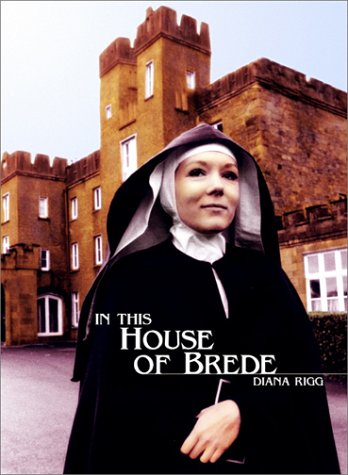I am starting on a new book from Ignatius Press by Peter Kreeft – always good – who has written a fictional conversation about the Eucharist between three religious figures of the 20th century:
C.S. Lewis
J.R.R. Tolkien
Billy Graham
Intriguing, no?
Kreeft is really good at this genre which he calls a “supposal”. For example, did you know that Pres. John F Kennedy, Aldous Huxley and C.S. Lewis – all three – died on the same afternoon, 22 Nov 1963. Kreeft wrote a conversation between them, meeting at their judgment.
Kreeft is thoughtful. He states clearly in the introduction that he does not attenuate the Catholic position of the Eucharist, even as he is fair to the positions of Lewis and Graham.
Check it out.
Symbol or Substance?: A Dialogue on the Eucharist With C. S. Lewis, Billy Graham and J. R. R. Tolkien

A helpful reader alerted me to a one-day sale on the Rumer Godden book, In This House Of Brede. Kindle version, $1.99. HERE (not sure about UK). This was made into a movie with Diana Rigg. HERE

Do you not have a Kindle? Oh dear… oh dear…
Kindle… reading joy.
Also, I have so many books – publishers send things – that I appreciate receiving books for Kindle. Thanks to readers who send books from my wishlist.


































Bruce Willis and Demi Moore have a daughter named Rumer, after the author. If they had to pick a weird name, at least they picked one with good associations!
The namesake Rumer seems very talented and skilled.
Diana Rigg starred in the 1975 made-for-TV movie along with Judy Bowker, who played St. Clare of Assisi in Brother Son, Sister Moon, earlier in the decade. Interestingly, Dame Diana Rigg (of Emma Peel fame from the 1960’s British spy series, The Avengers) has become interested in religion in her old age and when she was the host of the PBS series, Mystery!, there was a twinkle in her eyes when she spoke about brother Cadfael and the Benedictines.
In this House of Brede was filmed at the famous Benedictine Stanbrook Abbey in England. The abbey nuns who were in France during the French Revolution were in line to be executed. They were bequeathed the clothing of the Carmelite martyrs of Compiegne, which were kept at the abbey in England after the Revolution (the Benedictine nuns survived).
As for Peter Kreeft’s supposal, the genre was brought to a Zenith with the Peabody award winning PBS series, Meeting of Minds, by Steve Allen, which ran from 1977-1981.
https://en.m.wikipedia.org/wiki/Meeting_of_Minds
The Chicken
Oh, and how does one pronounce, Godden? I’ve been using a French pronounciation, even though she was English.
The Chicken
I can’t get into the “joy” of e-readers. Since I have a tiny apartment with little space for book storage, I tried a Nook and wanted to like it, but I gave up on it, as reading electronically just isn’t the same. I find that my retention of what I’ve read is greatly reduced when the material is electronic. There’s something about the weight, feel, and smell of a real book that connects with the memory better. I can maybe read an article electronically, but not a book. Maybe it’s because I sit in front of a computer for 8 hours a day already, but for reading, I just want paper, even if it costs more.
Having Read Peter Kreeft’s “Between Heaven and Hell” (the conversation between John F Kennedy, Aldous Huxley and C.S. Lewis that Fr Z mentions), I sought out “Symbol or Substance?” with great anticipation. I was not disappointed.
The book both tackles, in depth, the differences among Christians on the issue of the Eucharist, and models authentic ecumenical dialogue in the process.